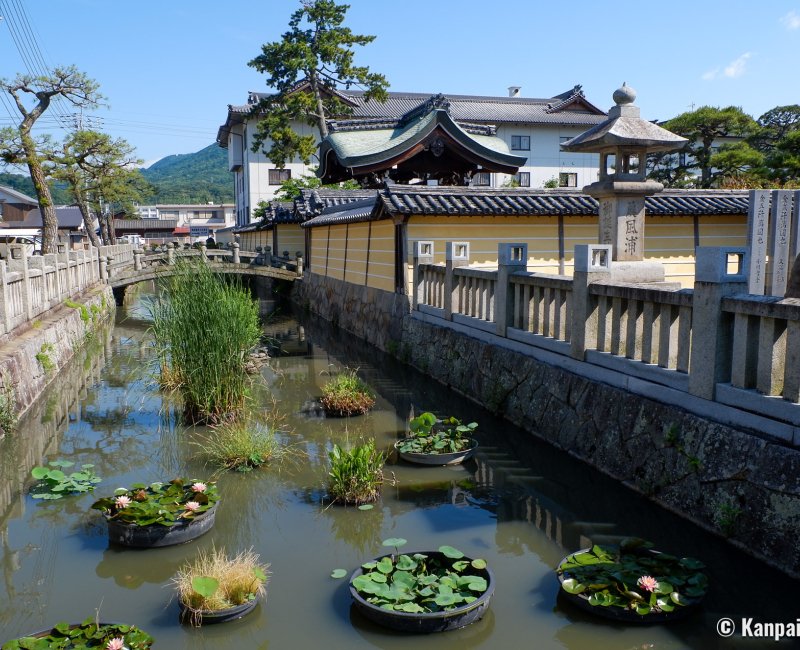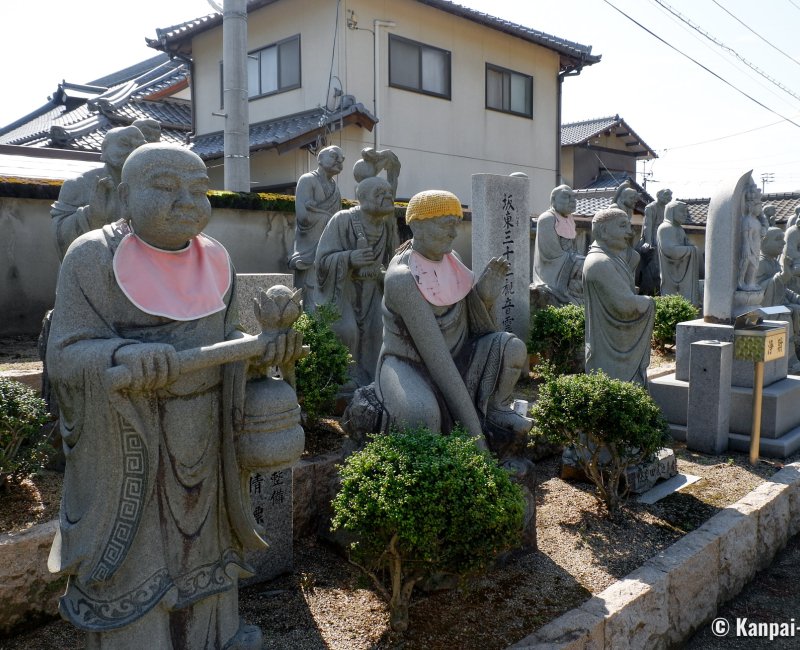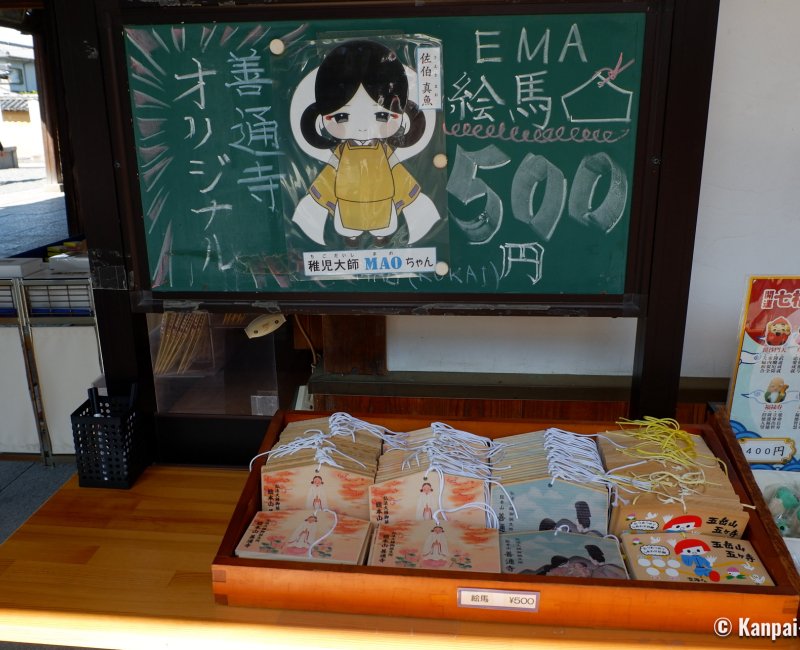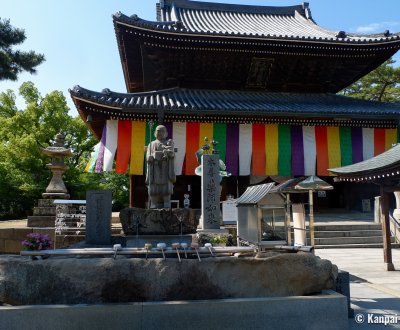Zentsu-ji
Major Temple of the Shikoku Pilgrimage
Zentsu-ji is the 75th temple on the Ohenro Pilgrimage route on Shikoku Island, and is located in the eponymous city in Kagawa prefecture in Japan. Established in the early 9th century in Kukai (Kobo Daishi)’s birthplace, it celebrates the founder of Shikoku’s 88 temples pilgrimage and of the Japanese Shingon Buddhist school.
Zentsuji City is located in the south-west of a great plain, between Marugame in the north and Kotohira-gu shrine in the south. It is home to Zentsu-ji temple, the largest of the 88 temples of the Shikoku pilgrimage, with a nearly 45.000m² superficies. The sacred enclosure, whose gravel grounds are crisscrossed by cobbled alleys, extents to the foot of Mounts Gogaku, a small 5-mountains chain whose shape in the horizon recalls of a folding screen.
Sohonzan Main Temple of the Shingon school
While it is the 75th station on the Shikoku Ohenro pilgrimage, Zentsu-ji is also one of the 3 most important temples of Shingon Buddhism, along with To-ji in Kyoto and Koya-san on Mount Koya. The latter is usually visited by pilgrims as an introduction to their Shikoku tour.
Founded in 807, upon monk Kukai (774 – 835)’s return from China where he studied Buddhism, it was named Zentsu-ji in 813, using the Sino-Japanese reading of the kanji characters of Kukai’s father’s name, Yoshimichi 善通. The temple is dedicated to Yakushi Nyorai, the Buddha of Medicine.
In 2023, Zentsu-ji celebrated the 1,250th anniversary of Kukai’s birth. Due to its importance in the Shingon school, but also thanks to its easy access and its flat grounds, it is probably one of the more attractive temples for pilgrims.

A multi-faceted visit in the heart of a quiet city
The religious compound is comprises 2 distinct enclosures: To-in Garan and Sai-in Tanjo-in, of similar sizes, connected by a short path. Most of their buildings are designated Cultural Properties, and were reconstructed between the end of the 17th century and the end of the 19th century.
To-in Garan in the east, is the closest to Zentsuji JR station and features:
- A tall, 43 meters high 5-story pagoda, open to the visit on a few days per year;
- The statues of Buddha’s disciples, the 500 rakan, placed along the inner side of the enclosure. Each character is shown in its own unique portrait and posture;
- 2 large camphor trees, believed to have been planted during Kukai’s lifetime; and,
- Gyosha-Myojin shrine.

Sai-in Tanjo-in, in the west, was reputedly built on Kukai’s birthplace and is home to:
- The Nio Gate, that continues in a long corridor to the main pavilion;
- Miei-do, the main pavilion under which lays Kaidan Meguri, a hundred meters long underground path that pilgrims walk in the dark in a purification ritual;
- The Treasure Hall, displaying precious liturgical objects; and,
- Various small secondary temples and mausoleums.
Pilgrims can purchase there ema votive plates, lucky charms and goshuin seal stamps picturing the kawaii Mao-chan, the image of Kukai as a child, dressed in the early Heian period fashion.

On the other side of the parking lot, the small Mount Koshiki-zan offers a mini 88 temples pilgrimage, following an ascending, approximately 1km long path. Its entrance is marked by the large vermilion torii ⛩️ of its protective shrine. Lastly, 3 other official temples of the Ohenro pilgrimage can be found in the Gogaku chain: Mandara-ji (n°72), Shusshaka-ji (n°73) and Koyama-ji (N°74). They can be easily reached riding a local bus from Zentsuji JR station, or on a long hiking day.
Zentsu-ji is one of the most important temple of Shikoku pilgrimage, dating back to its origins. The size of the site allows for a peaceful visit and to take the time to admire its various pavilions. A shukubo (overnight stay) is also available for pilgrims walking the Shikoku Ohenro trail.

